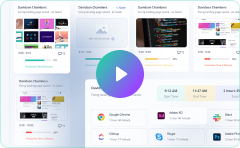10 Teramind Alternatives Under $10/Month (3 Free Tools)

Teramind is powerful, but it can feel heavy, expensive, and challenging to implement. It’s built for deep user activity monitoring (UAM), insider-threat detection, and data loss prevention (DLP). That’s perfect in high-risk environments. However, it may be too much for teams that only need screenshots, timesheets, GPS, or basic productivity insights.
On top of that, Teramind can raise privacy and works council issues (keystroke logging, continuous screen capture), and doesn’t include things like payroll, billing, or client invoicing. It also has gaps or reduced functionality on macOS, ChromeOS, and mobile.
So in this guide, instead of only showing “clones of Teramind,” I’ll walk you through 10 alternatives that actually solve specific problems, such as tracking productivity, monitoring employee activity, protecting email and data, checking app/URL usage, tracking field teams, or just getting clean timesheets and invoices.
You’ll see:
- Which tool fits which situation
- How it compares to Teramind
- When you absolutely still need Teramind
- What it costs (including free plans)
I’ve also added two quick-reference tables (cost/fit and deployment/compliance), and an FAQ for legal/privacy approval.
⚠️Legal & Privacy Note (Read This Before You Deploy Anything)
Any employee monitoring, for example, screenshots, keystroke capture, stealth/hidden agents, GPS/geofencing, activity scoring, can trigger legal, compliance, union, or works council issues. So, before turning on monitoring (especially Stealth Mode / automatic tracking):
- Get it in writing that devices are company-owned or company-managed.
- Disclose monitoring to employees where required by law (for example, in many EU countries and in unionized environments).
- Use blur/redaction when possible, so you’re not collecting private info like personal email, banking, or health data.
- Keep only the evidence you actually need for audits and investigations; don’t hoard surveillance data forever.
Bottom line: Stealth Mode and keylogging can be legal in some places and illegal in others. Always involve HR and legal, not just IT.
The Best Teramind Alternative Apps
Why You Should Look for Teramind Alternatives
Instead of listing the same Teramind issues over and over, here's what really happened when I rolled out monitoring across my remote teams, field teams, and teams with compliance requirements:
1. Your People aren’t All on Windows
If your workforce uses Macs, Chromebooks, iPads, or phones in the field, Teramind is not ideal, with its limited features on those devices. Some of the tools below support macOS, Linux, Android, iOS, and ChromeOS more cleanly.
2. You Don’t Need Full Surveillance, You Just Need Proof of Work
A lot of managers only care about:
- How many hours someone worked
- Which apps and websites they used
- A few screenshots for disputes
- Clean timesheets for billing and payroll
They don’t need keystroke logs or full-session video capture on every machine.
3. Privacy, Culture, or Legal Constraints
Works councils, unions, or local laws don’t actually like Teramind features like keystroke recording or constant screen capture. So, lighter Teramind alternative tools that don’t keylog and blur screenshots are much easier to get approved.
4. You have to keep HR / Legal / Works Councils Happy
If you’re in the EU, Canada, or a union environment, always-on keylogging plus constant screen recording can get blocked immediately. Ethical employee monitoring tools with blur, alert-based screenshots, or self-start “Visible Mode” are much easier to approve.
5. You’re Low on Budget or Growing Fast
Teramind is priced (and architected) for higher-risk environments. If you need to track hundreds of temporary or part-time workers, $15–$35+ per user per month gets expensive very fast, and setup takes time. Cheaper tools with simpler rollout can cover 100 people, whereas Teramind might only cover 20.
6. You Also Need Time Tracking, Billing, Payroll, GPS, or Geofencing
Teramind is a security/monitoring platform, not an operations/payroll platform. If you also need invoicing, automated payroll exports, geofencing, activity-level reporting, or client reporting, a time-tracking tool is a better fit.
7. You Want Answers Today, Not a 2-Week SIEM Project
Teramind can build rich rules and automated responses. That’s amazing, but that takes time to set up. If you just want “Who’s stuck?”, “Where are the distractions?”, “Who’s over capacity?” You’ll get faster answers from workforce analytics tools like Apploye or ActivTrak.
8. Your Biggest Risk is Email and SaaS, Not Desktops
If phishing, business email compromise, and sensitive file sharing in Google Drive or Microsoft 365 are your main issues, you’ll reduce more breach risk with something like Proofpoint than you will by logging keystrokes on endpoints.
9. You Need On-Prem & Strict Data Localization or Basic Windows Control
Some teams want full on-premise control (e.g., healthcare, defense, government). Others just want to block risky websites and USB sticks. In those cases, simpler tools like CurrentWare or Veriato make more sense than rolling out Teramind everywhere.
How I Picked the Teramind Alternative Apps
I didn't try to find exact copies of Teramind. Instead, I looked for tools that work well in six different situations: regulated industries, call centers, companies protecting intellectual property, remote teams with high turnover, systems requiring special access, and investigations.
My goal is to find software that gives managers the information they need, that is easy to set up, follows employee monitoring laws, and doesn’t violate privacy rules.
What I Looked For
Here's what had to be on my checklist:
- Monitoring Basics: At a minimum, it needs screenshots or a screen recording. Things like keystroke logging, data-loss prevention, and behavior analytics are nice bonuses depending on what the tool does best. And it needs to keep clear records.
- Setup Options: Cloud and/or private cloud/on-prem; RDS/Citrix/VDI awareness where relevant.
- Privacy Controls: Ability to run transparently (and, where appropriate, stealth); no forced keylogging; masking/blur where available.
- Activity Tracking: Shows what apps and websites people use, when they're active or idle, and can catch tricks like mouse jigglers. Time tracking is a plus for time-focused tools.
- Ecosystem: Connects to project management tools, payroll systems, security tools, and cloud security without requiring lots of custom work.
- Clear Pricing: Published prices or reliable estimates you can find online, free trials available, and no hidden costs.
- Easy to Manage: Quick to set up, simple policies, good reports.
- Compliance Features: Ways to get employee consent, control how long data is kept, blur sensitive info, and choose where data is stored.
- Support: Good documentation, responsive support team, guidance for virtual desktop setups.
How I Tested Everything
I started with a long list of options, then narrowed it down. I looked at UAM, DLP, time tracking, email security, and CASB.
I put all the vendor information into a spreadsheet so we could compare features, pricing, and integrations side by side.
Then I actually installed the software (or used demo versions) and tested them in real-world scenarios. I imagined having to explain the tool to HR or a works council, checked whether it could run visibly or in the background, tested the employee-monitoring features, and looked into whether keylogging was mandatory.
Finally, I calculated total costs, reviewed minimum purchase requirements, and ranked everything based on how much value it delivered relative to the hassle it caused.
Why Some Tools Didn’t Make It
I removed tools that were too limited. Some only worked on one operating system, didn't capture screenshots, or simply tracked time without providing useful reports.
I also skipped vendors who weren't upfront about pricing or required big minimum commitments that made it hard to try them out first.
And some platforms were too complicated. I had to set up tons of rules just to get answers to basic questions about your team.
Finally, I cut tools that raise privacy concerns, such as those that require keylogging or lack clear control over what your team can see.
Quick Look at the Best Teramind Alternatives

(Free for up to 10 users)
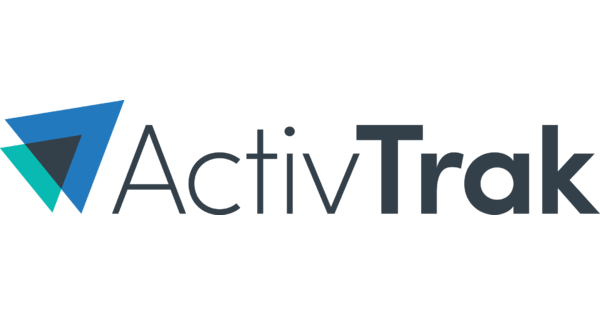
(Free for up to 3 users)







(Free up to 5 users)

Best Free Teramind Alternative for Time Tracking & Stealth Employee Monitoring with Built-In Payroll/Invoicing
When to Choose Apploye
You want screen monitoring (screenshots & screen recording), app/URL usage, timesheets, billing, and payroll, all in one tool.
When Not to Choose Apploye
You need full DLP, OCR of screen text, SIEM-level forensics, or advanced insider-threat automation. That’s still Teramind territory.
Teramind vs Apploye
Apploye is faster for proof-of-work tracking, attendance, and invoicing. Teramind is stronger for keystroke logging, policy-driven blocking, and insider threat detection.
Why I Chose Apploye over Teramind
I chose Apploye as my top alternative to Teramind because it was easier to set up, supported all my team's devices (Mac, Windows, Linux, and phones), included time tracking and payroll features built in, and cost significantly less per person.
Plus, it still gave me all the monitoring features my teams need every day, like screenshots, screen recording, and tracking which apps and websites people use.
Here’s why Apploye is the better fit for me:
1. Easy Setup On Every Device (Even Macs And Phones)
I could install Apploye on Mac, Windows, Linux, Android, and iOS without any issues. This meant I could track everyone: remote workers and office staff.
Yes, Teramind works on Macs, too, but it doesn't have all the features there. Since I have designers, developers, and managers using Macs, that was a problem.
2. The Right Monitoring Tools Without Making It Complicated
Apploye gives me screenshots (scheduled or on-demand), full-screen recordings, and reports on which apps and websites people use. The dashboard is clean and easy to understand. This is enough for me to coach my team, check their work, and investigate issues.
When I need to look into HR inquiries or quality disputes, screenshots plus app/website logs, plus video recordings do the job. I don't need data loss prevention or keystroke tracking just to verify someone's work.
In short, Apploye makes the basics simple. And if I ever do need those advanced features, I'd still use Teramind.)
3. Two modes made the difference
For teams worried about privacy, I ran Apploye in Visible mode, where employees start and stop it themselves, and they can see their screenshots and tracked data. And on company-owned devices, I used Stealth mode, which runs quietly in the background as soon as the employees start their PCs and monitors their computer activity.
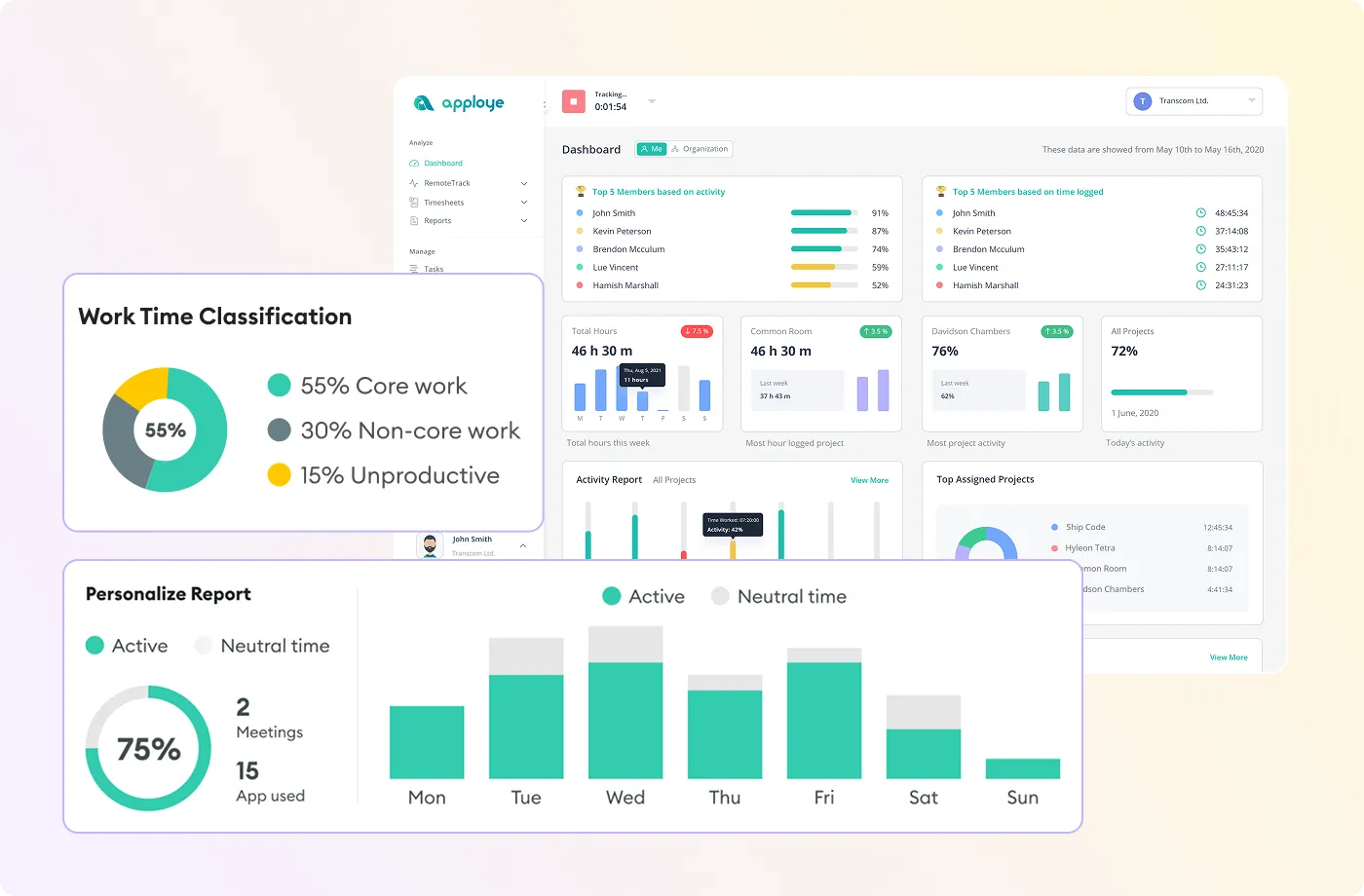
4. Time Tracking and Payroll are Already Included
Timesheets, approvals, attendance, client billing, and payroll are all in one place. My BPO teams and agencies can go from "who did what" to "what do we pay or charge" without switching tools. This saves a ton of admin time.
5. It Works With The Tools We Already Use
Apploye connects with Jira, Asana, and ClickUp, which my teams already use for project management. This means time tracking is linked directly to actual work tasks. I didn't have to build a complicated workaround to connect a security tool to our project management tools.
6. More Affordable, Especially As We Grow
Apploye has a free plan for up to 10 users. The paid plans are around $4.50 per person per month (if you pay yearly) or $7 per person per month (if you pay monthly). Even the higher tiers are way cheaper than security suites. This made it affordable for teams with high turnover or seasonal workers.
Teramind costs more, typically around $15-$35 per person per month, depending on the plan. I only use Teramind for high-risk departments where I really need those advanced security features.
Apploye Pros and Cons
Apploye Pricing

The Standard plan costs just $4.50 per user each month if you pay for a year upfront. It includes all the necessary time-tracking and employee monitoring features. Also, if you want AI to check your team’s productivity, that's what the Power plan is for.
The best part is that it's completely free for teams with 10 users or fewer. This means that small businesses and startups can try it out without incurring any costs.
Apploye is often 67% cheaper than similar services. That's a huge difference. What used to be an expensive tool only big companies could afford is now something any remote team can use.
Apploye Ratings
Best Teramind Alternative for Privacy-First Productivity Analytics & Coaching
ActivTrak (Windows, macOS, ChromeOS)
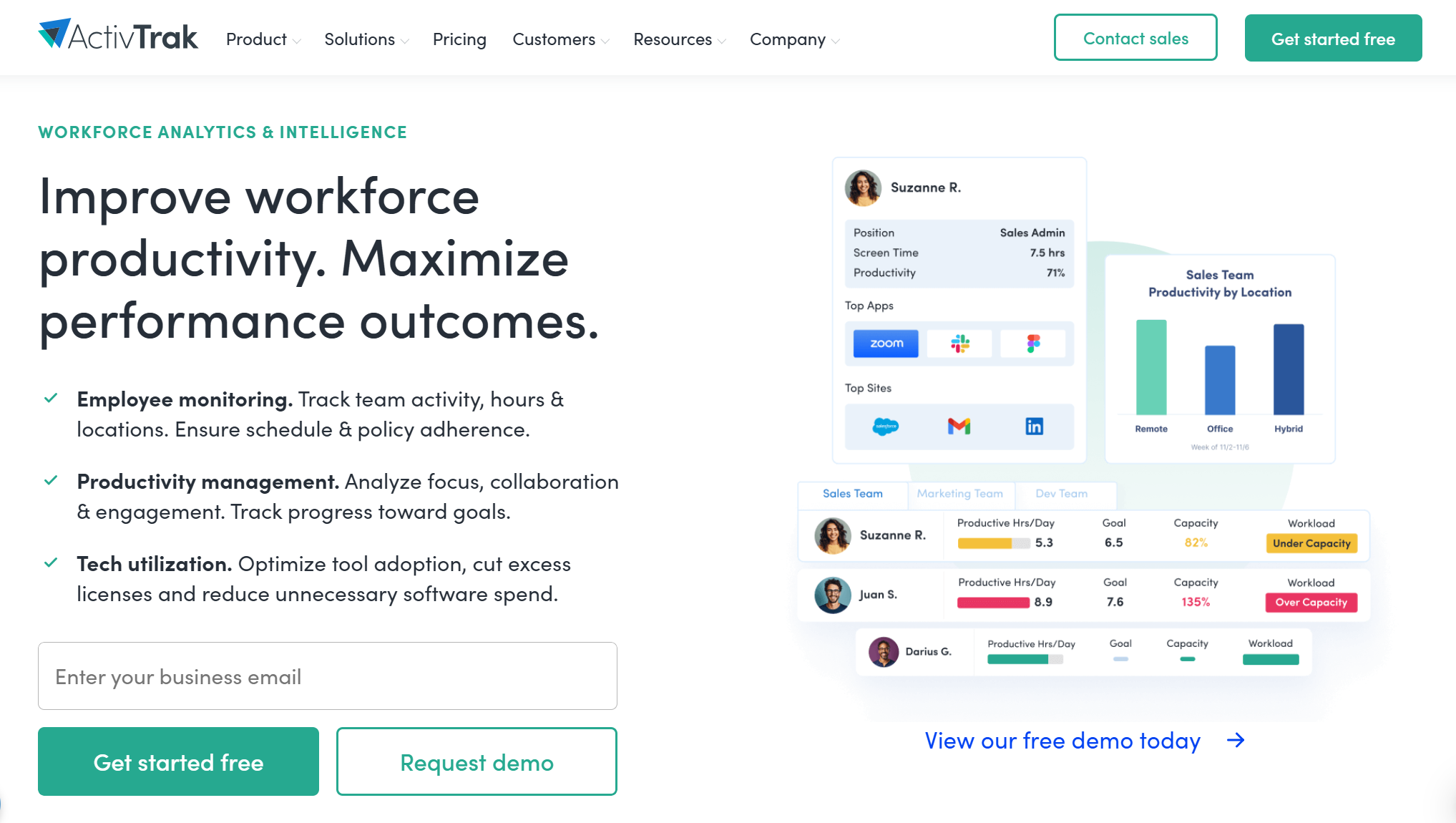
When to Choose ActivTrak
You need to understand productivity, workload balance, and burnout risk across remote/hybrid teams.
When Not to Choose ActivTrak
You need continuous screenshots, keylogging, or detailed forensics. Teramind is stronger for full investigations and insider-threat response.
Teramind vs ActivTrak
Teramind is surveillance-first (insider risk, DLP, forensics). ActivTrak is analytics-first (coaching, capacity, focus time).
ActivTrak is great at tracking how your team works without being creepy about it. It shows focus time, workload balance, and burnout warning signs.
In contrast, Teramind is more of a surveillance tool. It's built for catching insider threats, while ActivTrak helps you understand and support your workforce. That made ActivTrak way easier to get approved by legal and HR teams.
Getting ActivTrak running on Mac computers and Chromebooks was simple. It works on Macs from older versions all the way to the newest ones. By comparison, Teramind's own documentation admits their Mac version has limited functionality, so ActivTrak was the obvious choice for my design, development, and executive teams who use Macs.
Also, ActivTrak doesn't record every keystroke or constantly record your screen; that's by design. Screenshots only happen when there's a specific alert, not all day long. This meant I could roll it out in sensitive workplaces without causing problems.
In this case, Teramind's heavy surveillance features would have triggered too many red flags.
Instead of drowning managers in endless security logs, ActivTrak gives you clear dashboards that show who needs support and why. This was super helpful for managing remote and hybrid teams.
On the other hand, Teramind gives you deep security data; great for investigations, but not what everyday managers need.
Additionally, with ActivConnect, I easily sent data to Power BI, Tableau, and Looker using ready-made templates. Perfect for executive reports. Yes, Teramind connects to security tools (SIEMs), but ActivTrak made business reporting way easier from day one.
In terms of pricing, ActivTrak includes a free tier and paid plans around $10–$19 per person per month. This kept costs reasonable for rolling out to everyone. On the flip side, Teramind starts around $15+ and climbs quickly when you add features. It's built for high-security needs with pricing to match.
So, I only use Teramind for truly high-risk endpoints where we need that level of security.
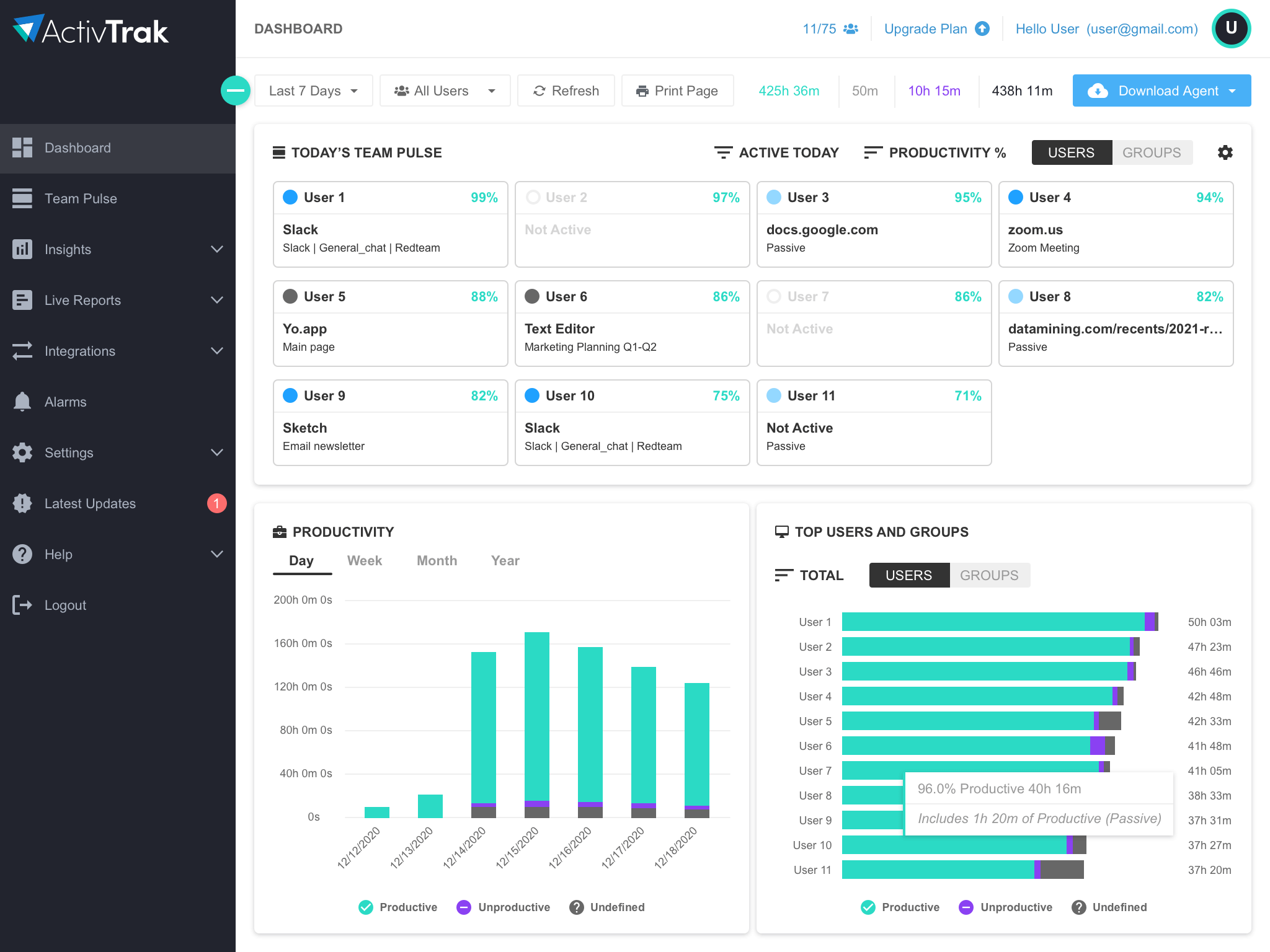
In short, ActivTrak is #2 because it nails workforce analytics, coaching, and privacy-aligned monitoring across platforms exactly where many teams need help day-to-day, while leaving the heavy DLP/forensics features to tools like Teramind.
However, Apploye still beats ActivTrak for tracking time & payroll, and monitors employee screens constantly. Plus, Apploye works better on phones, which my remote teams really needed.
ActivTrak Pros and Cons
ActivTrak Pricing
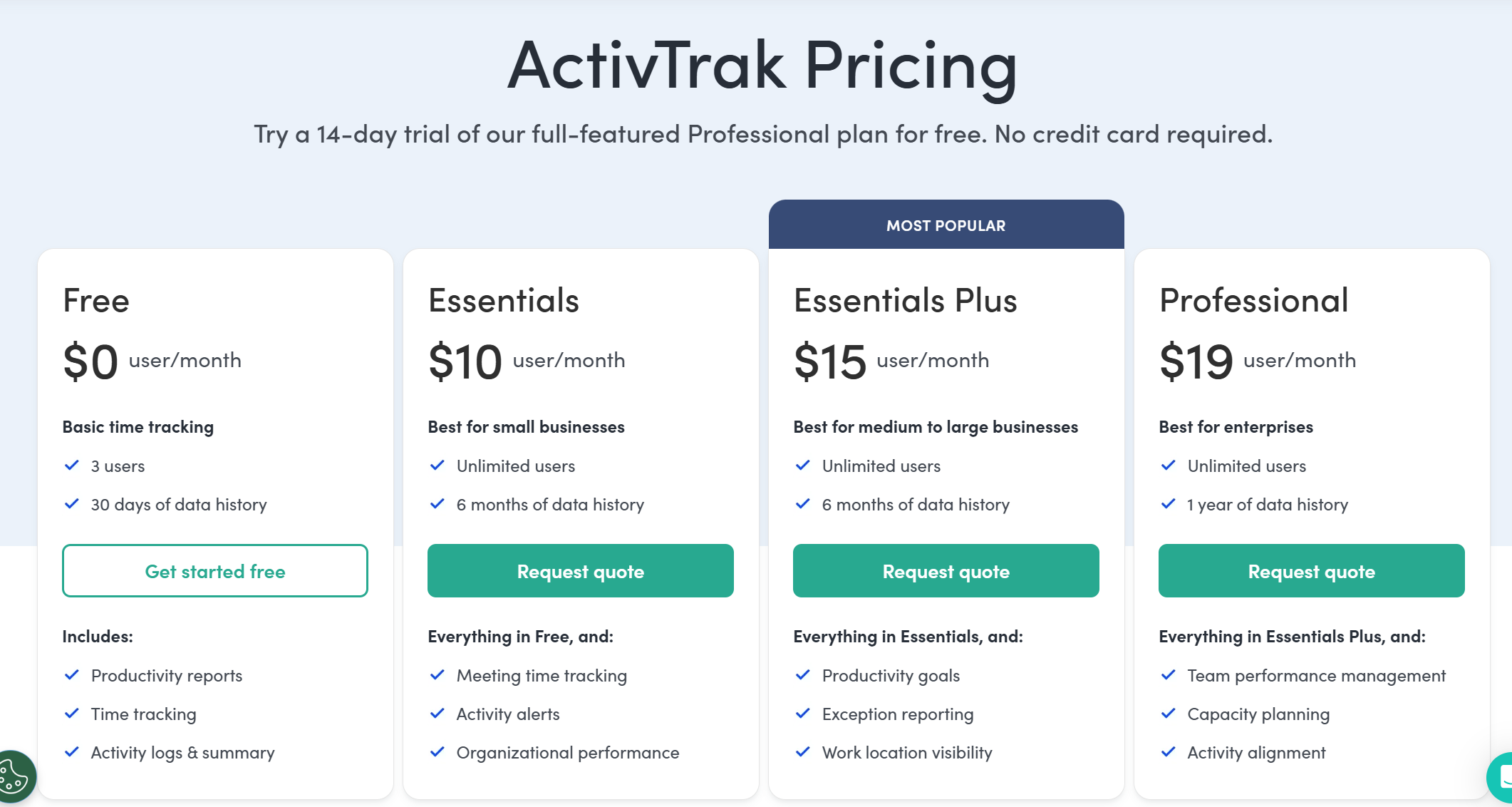
ActivTrak's pricing starts with a free plan for small teams, up to 3 people, with 30 days of data storage.
After that, you pay per person, usually between $10 and $19 per user annually. As you add more features, you get better analytics, and your data is stored for longer.
And if you have a bigger team or commit to multiple years, you can usually get a discount.
ActivTrak Ratings
Best Teramind Alternative for Flexible Tracking Modes and Payroll Integrations
Time Doctor (Windows, macOS, Linux, Android, iOS, Browser Extension)

When to Choose Time Doctor
You need both “interactive” time tracking (employees pick tasks and clock in/out) and “automatic” background tracking on kiosks/VDI, plus payouts/payroll.
When Not to Choose Time Doctor
You need hardcore insider-threat features like keystroke logging, OCR of screen content, or rule-based blocking. Teramind is stronger there.
Teramind vs Time Doctor
Teramind wins at forensic depth. Time Doctor wins at multi-device time tracking with screenshots + payroll, and it’s easier to get HR approval because it’s not a keylogger.
Similar to Apploye, Time Doctor works on pretty much everything: Windows, Mac, and even Ubuntu. It gives us useful data about how time is spent, handles payroll, and has privacy settings that my HR team feels good about.
Now, if I needed hardcore security features like keystroke logging or automatic content blocking, I'd still go with Teramind instead. But I don't need that level of surveillance for everyone.
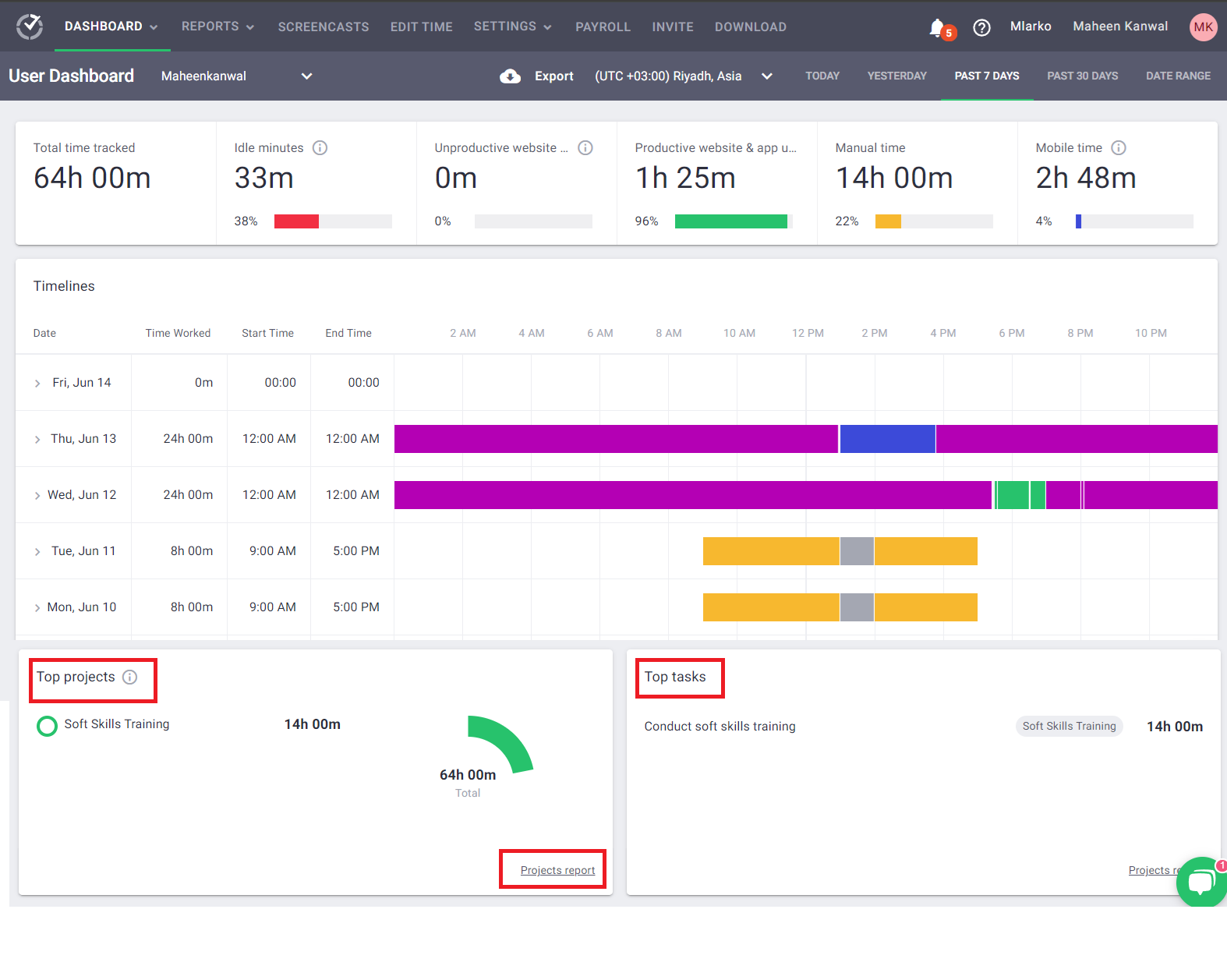
On personal devices or shared computers, we used the interactive version. Employees can start and stop tracking themselves and pick which tasks they're working on.
On locked-down machines like kiosks or virtual desktops, we switched to automatic mode. It just runs quietly in the background with no buttons to click. This setup kept HR happy while still giving operations the visibility they needed.
Because Time Doctor doesn't record keystrokes and lets people use the interactive mode, it was way easier to get approval from our works council. Compared to rolling out something heavy-duty like Teramind with a full UAM+DLP deployment.
Time Doctor Pros and Cons
Time Doctor Pricing

Time Doctor's pricing works like building your own toolkit. You pick a basic plan based on how many people need it, then add extra features if you want them.
Need AI-powered productivity benchmarks or alerts when something unusual happens? That's $3 per person. Want video screen recording? Another $3. Bigger companies can add things like single sign-on for $200 or BigQuery database access for $1,500.
Pay for a full year upfront and you'll save about two months' worth of costs. Plus, you get a 14-day free trial of the Premium plan to test everything out first.
Time Doctor Ratings
Best Teramind Alternative for Stopping Email Threats and Unifying DLP Across Email, Cloud, and Endpoints
Proofpoint (Windows, macOS, Web, Android, iOS)

When to Choose Proofpoint
Your biggest risk is phishing, BEC (fake CEO emails), risky file sharing, or sensitive data leaving via email and SaaS.
When Not to Choose Proofpoint
You mainly care about hourly productivity, screenshots, or proof-of-work for billing. That’s not Proofpoint’s job.
Teramind vs Proofpoint
Teramind watches what users do on the endpoint. Proofpoint stops malicious content (phishing, data leaks) before or as it moves through email, SaaS, and cloud. They solve different problems.
I chose Proofpoint over Teramind because it solves more problems. Teramind focuses on monitoring what employees do on their computers. Proofpoint does that too, but also protects against email attacks, stops data leaks in cloud apps, and watches for threats across multiple channels, not just on individual devices.
In my experience, most security problems start with email: phishing scams, fake CEO emails, and dangerous links. Proofpoint's email protection catches these threats before they even reach someone's inbox. Teramind can't do this because it only monitors devices, not email.
So, instead of using multiple security tools, I could handle alerts from email, cloud apps, and devices all in one place. That made it faster to respond to problems and easier during audits.

Proofpoint's cloud security feature gave me visibility into SaaS apps and enforced policies even on personal devices or contractor accounts. The protection followed the data wherever it went, not just on company computers.
When something suspicious happened, their investigation tool showed me a complete timeline - who did what, when, and where. It could even capture screenshots for evidence, which was really helpful for HR investigations or tracking how data moved around.
For small businesses or test projects, their Essentials pricing was straightforward and affordable per person. I could start by protecting email right away, then add more features as needed.
Proofpoint Pros and Cons
Proofpoint Pricing
The Essentials plan costs about $2-4 per user each month. It's designed for small businesses that want strong security without the high price tag.
From there, you can move up through Business, Advanced, and Professional plans, which cost around $6-7 per user monthly. Each plan adds more features like testing suspicious files and encrypting your data.
If you need serious protection, there's a big jump to enterprise plans. These cost $20-35 per user per year and include features that hunt down threats automatically.
Proofpoint Ratings
Best Teramind Alternative for AI/UEBA-driven Insider-Risk Detection With UAM
Veriato (Windows, macOS, Web, Chromebook, Android)
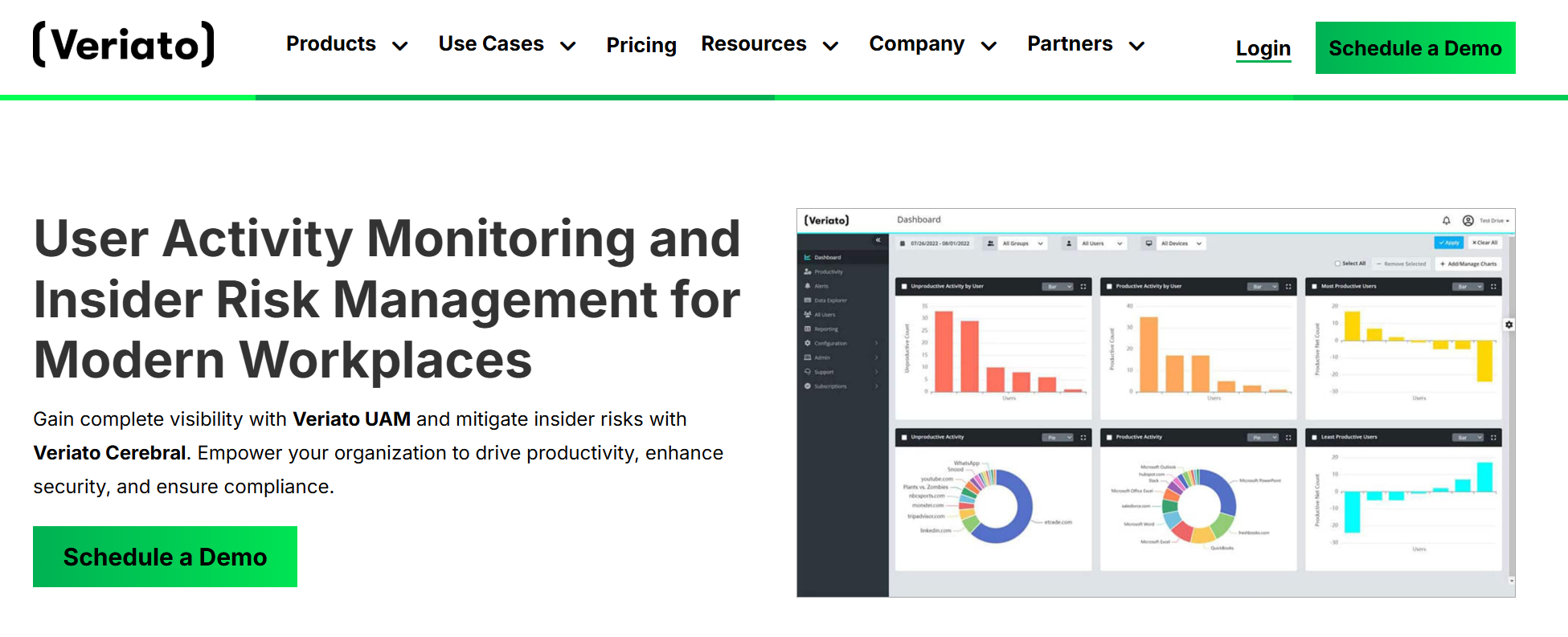
When to Choose Veriato
You need serious insider-risk monitoring: screenshots, chat/email monitoring, file/USB movement, sentiment analysis, and anomalous behavior scores.
When Not to Choose Veriato
You just need timesheets, payroll, or basic proof-of-work screenshots. Veriato would be overkill.
Teramind vs Veriato
Teramind is still stronger for keystroke logging, OCR, reading on-screen text, and automated rule-based responses. Veriato shines in insider-risk analytics (UEBA), sentiment/risk scoring, and flexible deployment (including on-prem).
I chose Veriato because it combines strong user activity monitoring with AI-powered insider threat detection. Plus, it works both in the cloud and on our own servers. It complements Teramind’s heavier endpoint features rather than duplicating them.
That said, Teramind is still my go-to tool when I need keystroke logging, detailed behavior tracking, reading text from video recordings, or capturing remote desktop sessions.
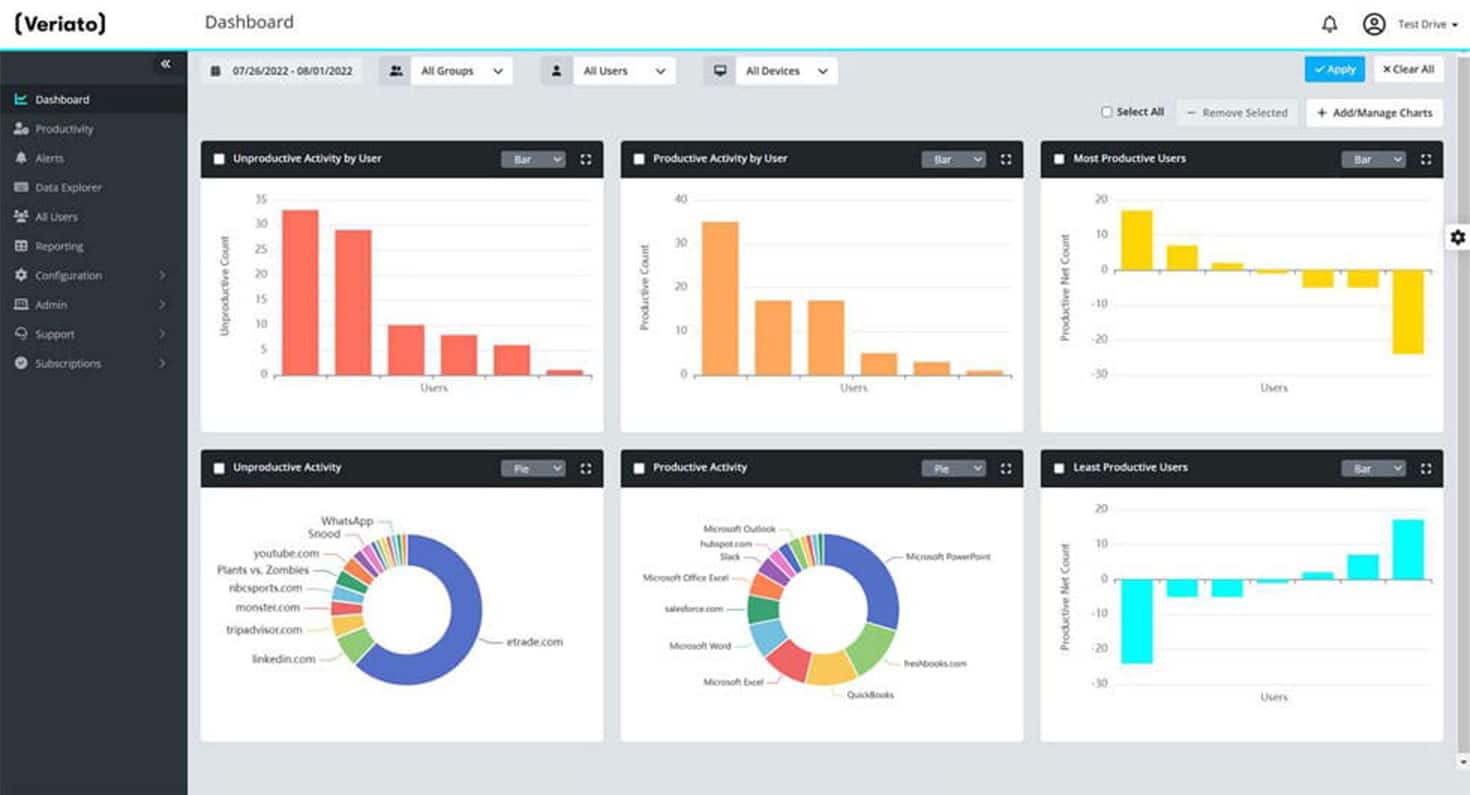
But I must agree, Veriato's basic monitoring is really solid. It tracks emails, chats, websites, apps, screenshots, files, documents (whether they're saved locally, on USB drives, or in the cloud), printing activity, and network usage. It gave me all the evidence I needed for audits and HR investigations without any complicated setup.
Also, the Insider Risk Management feature didn't just show me what was happening; it helped explain why. When something looked suspicious, the AI analyzed risk levels, spotted unusual patterns, and even checked the tone of communications. This made it much easier for my security team to focus on real threats instead of sorting through countless false alarms.
Additionally, I could deploy it in the cloud or on our own servers. This was crucial for my government and healthcare clients who have strict rules about where their data can be stored.
Veriato Pros and Cons
Veriato Pricing

Veriato has two pricing options:
UAM is the simpler choice. You pay per employee (not per device), starting at $15 per user each month when you pay annually. Pay annually and you'll save 40%. However, you need at least 5 seats for annual plans or 10 for monthly plans. And the price drops if you buy more seats.
Cerebral is the custom option. You'll need to request a quote because pricing is tailored to your needs. It's built for insider-risk analytics and can be installed on your own servers if you need that level of control.
Veriato Ratings
Best Teramind Alternative for Fast Web Filtering and USB Lockdown
CurrentWare (Windows, macOS, Web)

When to Choose CurrentWare
You run primarily on Windows (including RDS, Citrix, call centers, kiosks) and you care about blocking risky sites, locking down USB drives, and proving what people were doing.
When Not to Choose CurrentWare
You want Mac/Linux parity, or field/mobile tracking, or BI dashboards. Also, skip if you need full DLP with sentiment/risk scoring. In that case, Veriato/Teramind would be better.
Teramind vs CurrentWare
Teramind is deeper for forensic recording and insider threat. CurrentWare is faster/easier when you just want, “No one opens Facebook, no one plugs in a random USB, and I can take a screenshot if I have to.”
I picked CurrentWare because it's straightforward and gets the job done. It runs on Windows and helps you handle common security problems like employees visiting risky websites, copying files to USB drives, or proving what people are actually working on. You can install it on your own servers or use it in the cloud, and the pricing is clear upfront.
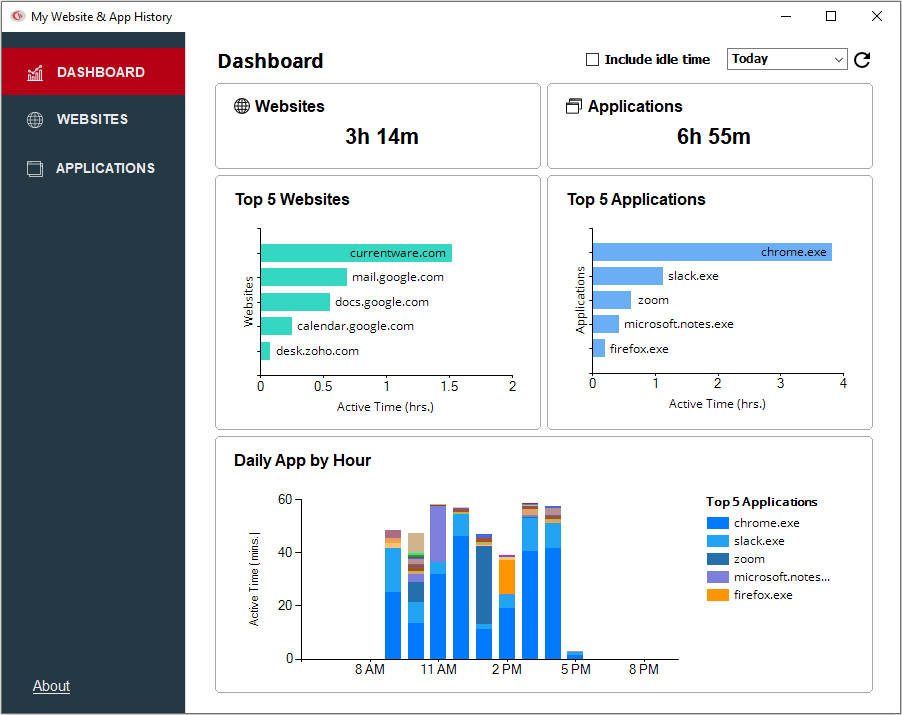
I sometimes combine it with Veriato when I need to monitor Macs and Linux computers too, or Teramind when I need really deep monitoring and data protection.
But for high-stakes investigations like tracking potential insider threats, reading text from screenshots, recording keystrokes, setting up automatic alerts, or capturing remote desktop sessions, employee monitoring tools like Apploye or Teramind are still better.
That said, CurrentWare won me over because it focuses on practical, everyday controls. For example:
- BrowseControl blocks bad websites and apps by category or specific URL.
- AccessPatrol locks down USB ports and tracks when files get copied to thumb drives, perfect for stopping quick data theft.
- BrowseReporter lets you see what's on someone's screen in real-time and takes scheduled screenshots for basic investigations.
Fortunately, CurrentWare works on all Windows machines (both servers and regular computers). The control panel runs in a web browser, so I can manage it from any device. This made it easy to roll out across call centers and shared computer stations.
It also supports virtual desktops and remote access tools like Citrix and Remote Desktop Services. This is important for our higher-security sessions and call center setups.
Best of all, you're not locked in. I've run it on our own servers, set it up for remote workers, and even tested it in the cloud (AWS, Azure, Google Cloud) using our own license.
CurrentWare Pros and Cons
CurrentWare Pricing

CurrentWare lets you pick what you need.
Want just one feature? It's $5 per person each month (paid yearly). You can choose from USB/data protection, web filtering, activity monitoring, or power management.
Or grab all four features together for $12 per person per month (paid yearly). The bundle saves you money.
Just know there's a $999 minimum to start each year. And if you're buying for a bigger team, committing for longer, or you're a nonprofit or school, you can get extra discounts.
CurrentWare Ratings
Best Teramind Alternative for Quick, Manager-Friendly Visibility with Visible/Stealth Modes and Optional On-Prem
Insightful (Windows, macOS, Linux)
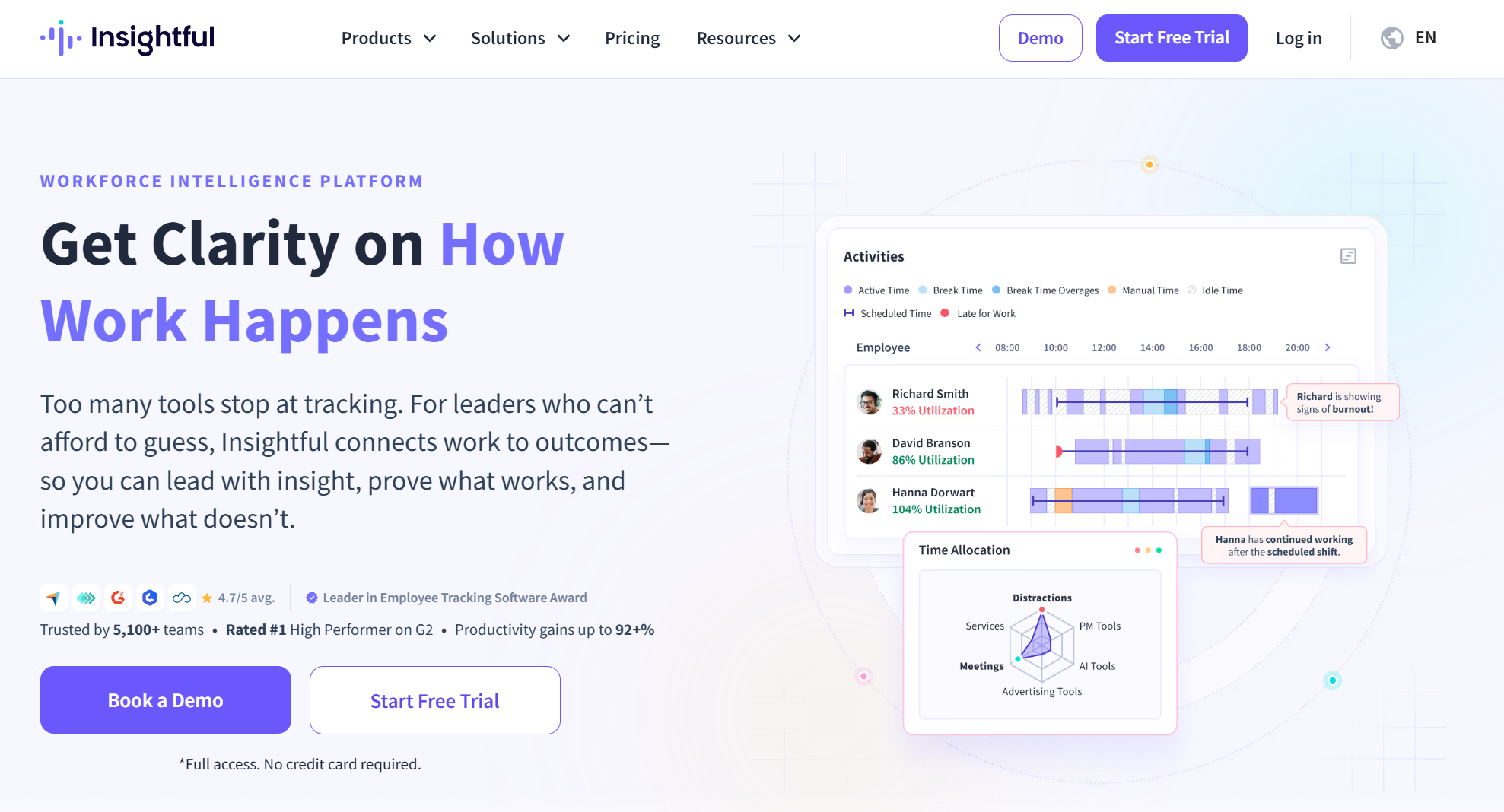
When to Choose Insightful
You want attendance, screenshots, activity/idle tracking, and productivity insights that managers can understand without needing a security background.
When Not to Choose Insightful
You require keystroke logging, OCR, or highly granular forensic evidence of insider theft. Teramind still wins there.
Teramind vs Insightful
Teramind = deep surveillance and insider-threat features. Insightful = “show me who’s working, what apps they’re using, and who’s faking activity,” in a dashboard.
Just like Apploye, Insightful offers two ways to use it. That is, I could use Visible mode when I wanted employees to see what was being tracked (they can start and stop it, log projects, and adjust how often screenshots are taken). Or I could switch to Stealth mode when I needed stricter monitoring (it tracks attendance automatically, and employees can't control it).
Right away, I could see which apps and websites people used, when they were active or idle, productivity patterns, and real-time monitoring insights.

Insightful gives you enough proof of what's happening without going full DLP like Teramind. It takes screenshots (on a schedule or when you need them) and records screens, so managers can show what someone was working on or piece together timelines for HR issues; all without recording every single keystroke.
There's also a new feature called Activity Verification that spots fake activity, like when someone uses a device to keep their mouse moving. This helped me catch a few people who looked "always active" but weren't really working.
In the end, I like Insightful because it strikes the right balance between visibility, proof, flexibility, and cost. I use it for most of my team's productivity and accountability tracking. I only bring in Teramind when I really need heavy-duty monitoring like keystroke logging or detailed data & security insights.
Insightful Pros and Cons
Insightful Pricing

You pay per employee who actually uses the system, not per device they use. Admins, managers, and clients don't count toward your bill unless you're tracking their time too. So you only pay for billable hours.
If you add someone mid-month, you'll only pay for the days they're active. Also, there's a 7-day trial with almost all features included.
When you're ready to scale up, the Enterprise plan gives you serious security features like single sign-on, audit logs, and even the option to host everything on your own servers (if you have 250+ users). All the compliance stuff is built right in.
And for more control, add advanced alerts that flag things like printing sensitive files or unusual file transfers.
Insightful Ratings
Best Teramind Alternative for GPS/Geofencing and Screenshots with Payroll/Payouts
Hubstaff (Windows, macOS, Linux, Web, Android, iOS, Browser Extension)

When to Choose Hubstaff
You run distributed teams, field teams, or contractors and need GPS job sites, geofencing, screenshots (optional/blurred), activity levels, invoicing, and payroll.
When Not to Choose Hubstaff
You need continuous video recording, keylogging, or full DLP. Hubstaff intentionally does not do that.
Teramind vs Hubstaff
Teramind is built for insider risk and compliance investigations. Hubstaff is built for time tracking, GPS, proof-of-work screenshots, and automatically paying people.
Similar to Insightful and Apploye, Hubstaff covers all the basics my managers actually need day-to-day. I'm talking about time tracking, screenshots (with a blur option), seeing what apps and websites people use, activity levels, payroll, and GPS for field teams. Plus, it works on all the devices my teams use. This made it easy to get everyone set up, whether they're in the office, working from home, or out in the field. And I didn't need a detailed monitoring system like Teramind to make it happen.
The screenshots are optional, up to 3 every 10 minutes, and you can blur them to protect sensitive info. There's no video recording and no keystroke logging. The activity tracker just shows when someone's using their keyboard or mouse, not what they're typing. The HR and my employees appreciated this privacy-friendly approach.
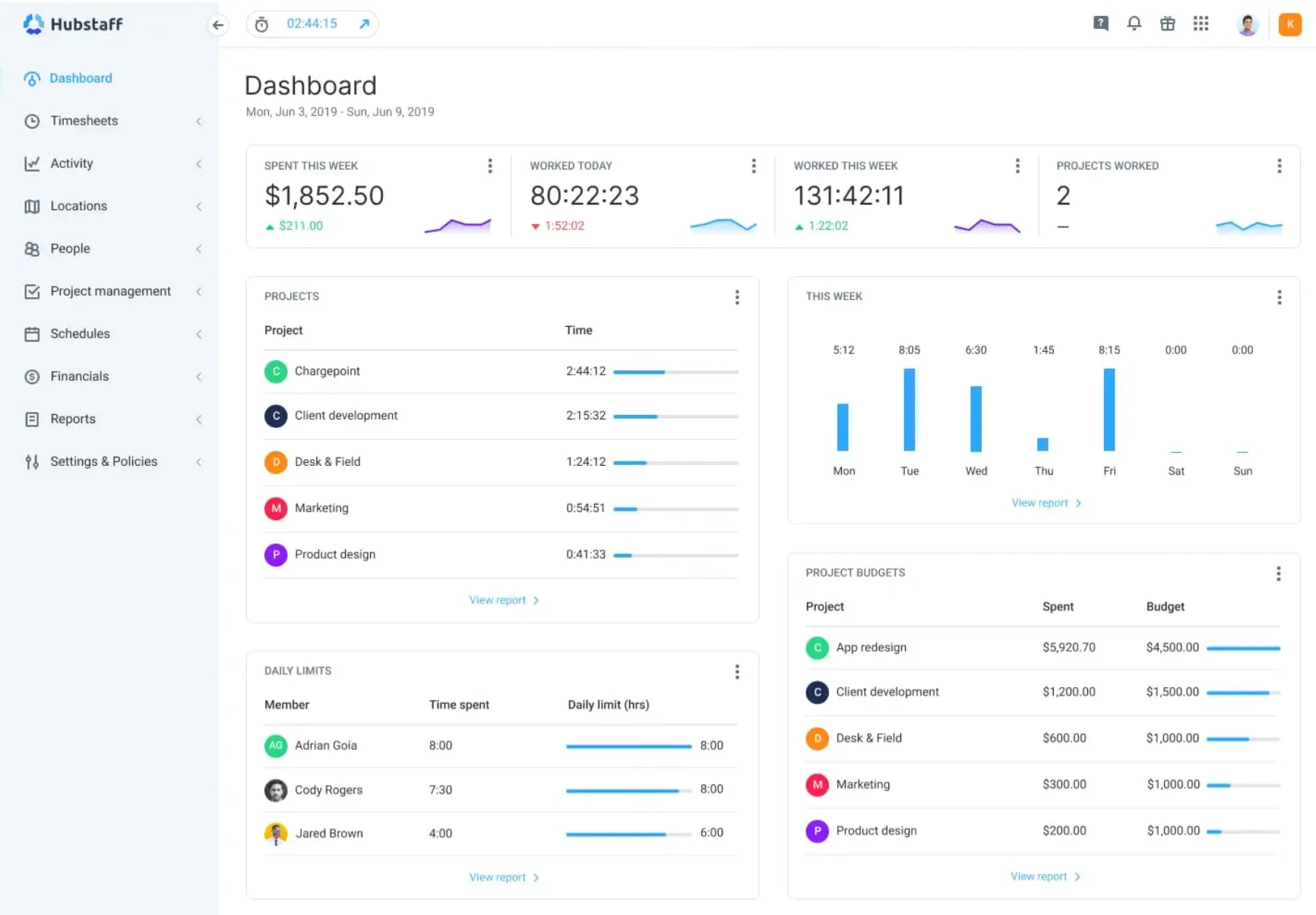
For my field workers, like auditors and installers, I set up GPS tracking and geofences around job sites. Now their time clocks start and stop automatically when they arrive and leave.
I can also see which apps and websites people use, track active versus idle time, and get alerts for "unusual activity" (like those mouse-jiggler devices). This gives supervisors helpful info for coaching.
Finally, I hooked up our payment systems (PayPal, Wise, Gusto, Deel) and project tools (Jira, Asana, Trello, GitHub, QuickBooks). Now hours automatically flow into invoices and payroll with hardly any manual work.
Hubstaff Pros and Cons
Hubstaff Pricing

Lower-tier plans give you basic tracking. You can add extras like screenshots, activity tracking, GPS, scheduling, payroll, and invoicing. But you'll pay more for each add-on. Higher-tier plans already include these extras in the price.
If you pay yearly, you can add more people mid-year and only pay for the time they use it. With monthly plans, you can't get refunds, but if you remove someone, they can still use their seat until the month ends.
One nice perk: if someone just needs to view reports without tracking time, you can give them a free Project Viewer account. That way, you're only paying for people who actually track their time.
Hubstaff Ratings
Best Teramind Alternative for Trust-First Time Tracking and Client Billing/Profitability
Toggl (Windows, macOS, Android, iOS, Browser Extension)

When to Choose Toggl
You want clean timesheets, accurate billing rates, profitability tracking, and client-ready reports.
When Not to Choose Toggl
You need screenshots, keystroke logging, GPS, or any proof-of-work evidence. Toggl Track will never give you that.
Teramind vs Toggl Track
Teramind is about oversight and evidence. Toggl Track is about trust, easy adoption, and clean client billing. Creative teams and consultants tend to adopt Toggl more readily than they do surveillance tools.
I chose Toggl Track because it's super easy to use and doesn't feel like Big Brother watching over your shoulder. It gives me clean reports for billing and profit tracking, and it was super easy to roll out across the team. Best of all, creative teams and client-facing staff actually use it, unlike Teramind, which got major pushback.
Toggl promises no screenshots, no keylogging, no webcam spying, and no location tracking.
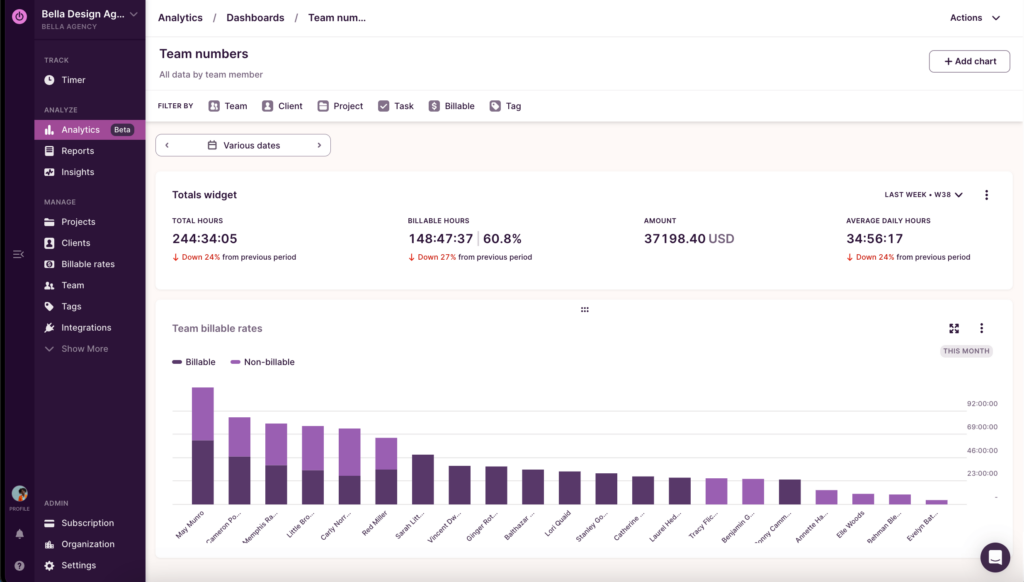
The Timeline feature on desktop quietly tracks what apps and windows I'm using and can suggest time entries based on keywords. But it's just for me, not for managers to spy on. It helps me fill in the gaps in my timesheet
Toggl can also pull in my Google or Outlook calendar events and turn them into time entries automatically. That saves consultants a ton of manual work.
Plus, I can set different billing rates at the workspace, project, or individual level. The reports give me clean invoices and show profit margins, exactly what my project managers needed.
Toggl Pros and Cons
Toggl Pricing

Toggl Track has four pricing plans. The Free plan works for up to five people and includes basic time tracking and simple reports.
Starter costs $9 per person each month. It adds features like billing rates, project tracking, time estimates, and team reports.
Premium is $18 per person per month. This plan helps you see which projects are profitable. You also get fixed-fee projects, time approvals, custom reports, and single sign-on.
Enterprise is the top tier. It comes with personalized setup help, tools to manage multiple workspaces, and discounts for larger teams.
All paid plans come with a 30-day free trial. If you pay yearly instead of monthly, you'll save about 10% on the cost.
Toggl Track Ratings
Best Teramind Alternative for Simple Time Tracking Screenshots with Optional Stealth Mode
Monitask (Windows, macOS, Linux, Android, iOS, Chromebook)
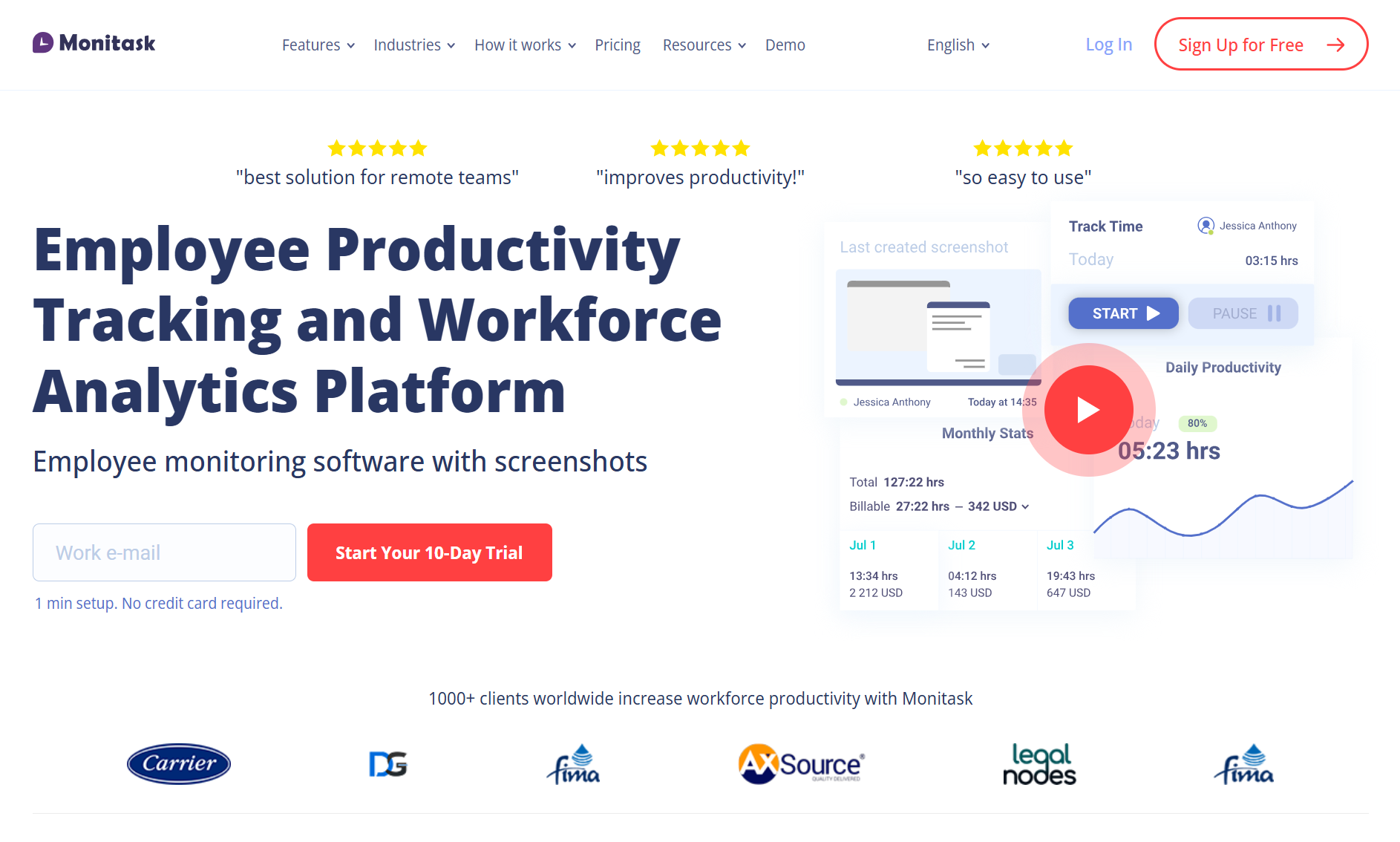
When to Choose Monitask
You want time tracking + screenshots (with blur) + activity levels, and you need it across Windows, Mac, Linux, phones, and Chromebooks without forcing keystroke logging.
When Not to Choose Monitask
You need OCR, auto-blocking of risky behavior, keylogging, or heavy DLP. Use Teramind for that subset of endpoints.
Teramind vs Monitask
Teramind wins on forensic depth and rule-based response (keylogging, reading screen text, automated alerts). Monitask wins on “good enough proof of work” that doesn’t do excessive monitoring.
For everyday monitoring, I switched to Monitask. It gives me what I actually need: time tracking, seeing which apps and websites people use, screenshots (either random or scheduled), and activity levels. It can even catch tools that fake activity.
Plus, it works on pretty much everything: Windows, Mac, Linux, phones, and even Chromebooks. You get a 10-day trial to test it out.
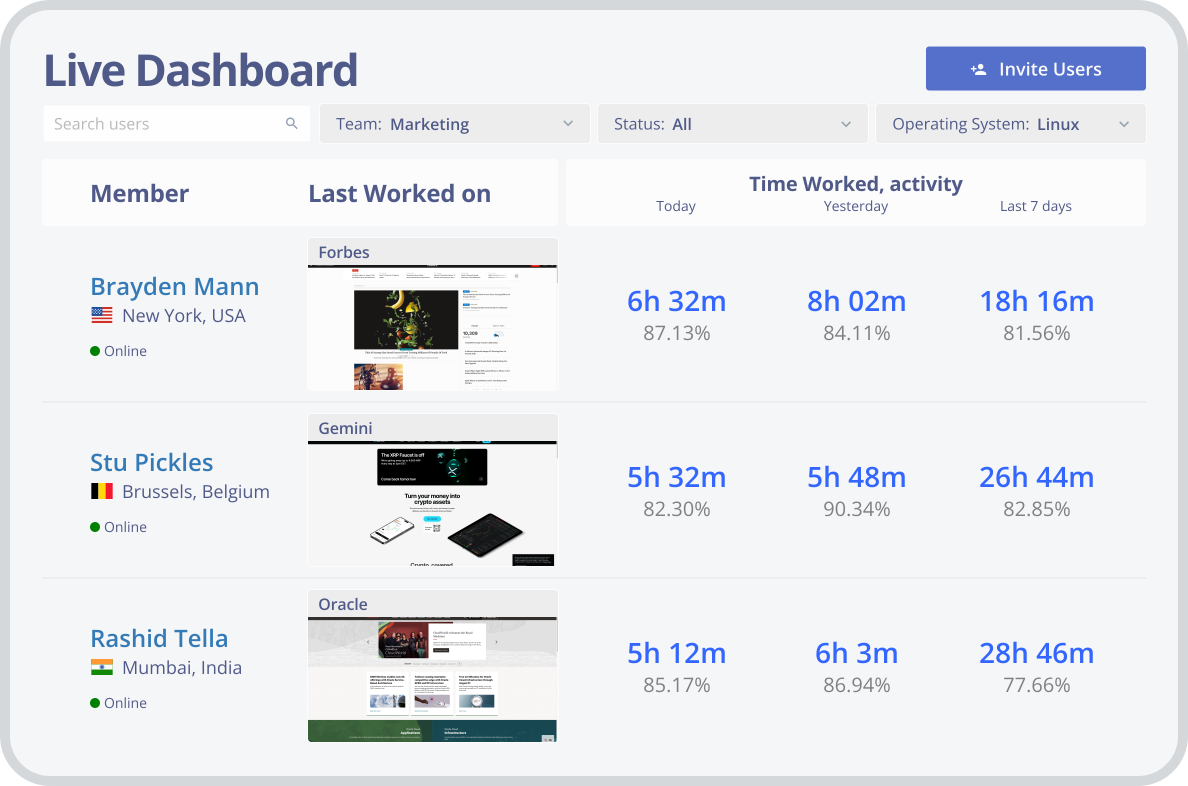
But, for serious security situations, I still use Teramind. When I need keystroke logs, reading text from screen recordings, setting up automated security rules, or recording remote desktop sessions, Teramind is my go-to. I only use it on the computers that really need that level of monitoring.
That said, my team preferred Monitask. That’s because my creative and client-facing teams really hated the idea of keystroke logging. And Monitask doesn't capture what you type; it just counts how much you're typing. It only tracks when you're clocked in.
Also, the app takes screenshots with privacy in mind. The SmartBlur feature automatically hides private information. Combined with app reports and activity counts, I get enough information to coach employees and do audits without feeling like Big Brother.
Monitask Pros and Cons
Monitask Pricing

The Pro plan starts at $6.49 per person, per month. With this plan, you get time tracking, screenshots, one integration, and your data is saved for 1 month. If you need more features, the Business plan costs $8.99 and gives you unlimited integrations, tools to manage your team and tasks, a way for clients to log in, and 2 months of data storage.
For even more detailed tracking, there's Business Premium at $12.99. This plan includes everything in Business, plus it tracks websites, documents, and searches in detail. You also get early access to new features before everyone else.
If you have a bigger team with 100 or more people, the Enterprise plan will be perfect. The price is custom-based on your needs, and you get more API access, priority support, and audit logs.
No matter which plan you choose, you can save 18% by paying for the whole year upfront. There's also an option to pay extra between $2.40 and $7.20 per person, if you want more screenshots taken each hour, anywhere from 60 to 120.
Monitask Ratings
Conclusion
So, what makes these tools better alternatives to Teramind?
Well, they're easier to set up, they respect privacy by monitoring work without recording every keystroke, and they work on more devices. And tools also include extra features like billing, payroll tracking, and GPS, so you don't need to pay for separate tools.
FAQs
Is Teramind illegal?
It depends on where you're located and how you set it up. Certain features like keystroke logging, Stealth Mode, continuous screen capture, and audio/video recording can get you in legal trouble without proper employee consent. This is especially true in places like the EU, Canada, and workplaces with unions or works councils.
Does Teramind record keystrokes?
Yes, Teramind can even record what people type on their keyboards. This makes it great for catching insider threats. However, privacy groups and employee councils often shut it down because it's too invasive.
What companies use Teramind?
More than 10,000 companies in over 125 countries use Teramind. It's especially popular with banks, healthcare organizations, government agencies, and call centers.Recent examples show it's being used by call centers, mortgage companies, and government contractors.
Is Teramind worth it?
Teramind is a good choice if you need serious security protection against insider threats or data leaks on high-risk computers. It can track keystrokes, read text from screenshots, set up detailed security rules, record special remote sessions, and investigate incidents in depth.
How much does Teramind cost?
Teramind’s Starter plan costs $15 per user each month. The UAM plan is $30 per user per month, and the DLP plan is $35 per user per month. If you need the Enterprise plan, you'll have to contact them for custom pricing. Also, if you pay annually, you'll save about 8% compared to paying month-by-month.
What’s the cheapest Teramind alternative that still takes screenshots?
The cheapest Teramid alternatives are Apploye (free up to 10 users), Monitask (~$6.49/user/month), and Time Doctor (~$6.70/user/month). These tools give you screenshots or video proof-of-work, app/URL usage, and activity tracking.
Which software can replace Teramind with similar features?
Best like-for-like Teramind replacements are Veriato, Ekran System, InterGuard, and Proofpoint ITM (ideally with Proofpoint DLP/CASB). They cover keystrokes, screenshots, rules, and insider threat detection features; CurrentWare fits Windows-centric web/USB control. If you don’t need keylogging/OCR, Apploye or Insightful offer lighter, privacy-friendlier monitoring.
Which Teramind alternative includes GPS and geofencing?
Hubstaff is the best alternative to Teramind with GPS and geofencing. It can start/stop time automatically when someone enters/leaves a geofenced job site, then push hours into payroll and client invoices.
Which Teramind alternative offers better reporting and analytics features?
If you're looking for alternatives to Teramind, Apploye has some of the best reporting features. You get ready-made dashboards that show how productive your team is, when they're most focused, and whether the workload is balanced. You can also see what everyone's working on in real time. Also, Apploye integrates with your project management tools so you can send activity data to them for more detailed analysis.
How can businesses choose the right Teramind alternative based on their industry needs?
Decide if you need deep security/DLP or day-to-day productivity/time tracking. Match each tool to your compliance/privacy rules, device/VDI coverage, and hosting needs (SaaS vs on-prem). Check integrations (PM, HR/payroll, SIEM) and total cost (licenses + admin).

